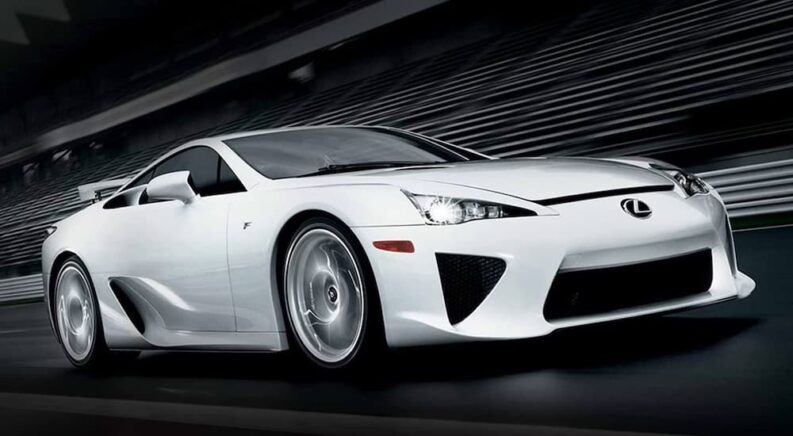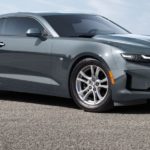When I say “Yamaha,” there are a few things you might think of. One may be the world’s largest musical instrument manufacturer, churning out everything from pianos and guitars to drumsticks. Another is the audio company that, among other things, developed the first successful digital synthesizer and the first CD recorder. If you’re reading CarLifeNation, you most likely think of Yamaha’s world-class motorcycles, ATVs, and other power sports machines.
I’m betting not many of you had cars come to mind. However, as the title gave away, Yamaha has a notable track record of developing, building, and fine-tuning automobile engines. They aren’t small projects, either—Yamaha’s efforts include collaborations with Toyota, Ford, Volvo, and other automotive titans. I decided to look closer at five of the most noteworthy Yamaha engines and see how a powersports, music, and audio giant has assembled a remarkable automotive resume.
#1 – The Toyota 2000GT
I can’t make any list of Yamaha car engines without including the first one. In 1964, Yamaha approached Toyota about a partnership for what became the 2000GT, Toyota’s first sports car. Under the agreement, Toyota oversaw the main design and concept while Yamaha worked on the details of the engine, chassis, and body.
At the time, the Yamaha development team had almost no experience making anything automobile-related—but that didn’t stop them. Yamaha took the 2.0L inline-six engine from the Toyopet Crown and switched it to a dual-overhead cam (DOHC) design. This increased the output from around 100 hp to 148 hp, giving the two-seater a then-impressive top speed of 135 mph. Designers also added a black wrinkle finish to the cylinder head covers as a nod to their motorcycle heritage.
Results were immediate. The Toyota 2000GT got everyone talking when it debuted at the October 1965 Tokyo Motor Show. Then, it set 13 international speed records and three world records armed with its Yamaha-infused powerplant. Yamaha would also spearhead the car’s production, hand-building 337 vehicles between 1967 and 1970. Today, the Toyota 2000GT is regarded as the first Japanese supercar—and in 2022, a Carroll Shelby-modified 2000GT sold for $2.5 million at auction, making it the most expensive Japanese car ever.
#2 – The Toyota 2ZZ-GE
The success of the 2000GT led to several future engine partnerships between Toyota and Yamaha. One of the most notable is the 2ZZ-GE inline-four, part of the ZZ engine family that Toyota revealed in 1997. The 1ZZ was the first Toyota four-cylinder engine with an all-aluminum block and was well-regarded for its efficiency and reliability. For the 2ZZ-GE, Toyota enlisted Yamaha to add some oomph. Yamaha responded with a new cylinder head, a dual camshaft system, a higher compression ratio, and other modifications that meant more power—up to 200 hp naturally aspirated—and the ability to rev up to 8,600 RPM.
While primarily used in high-performance variants of the Toyota Celica and Corolla, the 2ZZ-GE found its way into many other vehicles. It was the heartbeat of the Toyota Matrix XRS compact hatchback as well as the co-developed Pontiac Vibe GT. Then Lotus got its hands on the engine, putting it in the Elise, Exige, and 2-Eleven—where supercharging took it to 256 hp in an ultra-lightweight roadster. It was named the 1.4-1.8L International Engine of the Year in 2002, and you can still buy rebuilt and low-mileage 2ZZ-GE engines today.
#3 – The Ford Taurus SHO
Toyota is far from the only automaker to experience the Yamaha touch. In 1988, Yamaha was put in charge of turning the Vulcan 3.0L V6 engine into a powerplant suitable for the new Ford Taurus Super High Output (SHO). They came up with the Ford K0A, a 60-degree DOHC engine that could make 220 hp and 200 lb-ft of torque. More notably, the engine had a symmetrical intake manifold that allowed the engine to be rotated 180 degrees. This meant aftermarket modders could flip the engine and change it from transverse to longitudinal mounting, leading to the K0A’s going into numerous project vehicles.
Ford would use the engine from the Taurus SHO’s initial rollout until 1995. From 1993 to 1995, it was available in the original 3.0L configuration and a 3.2L version that increased torque to 215 lb-ft. In 1996, Ford and Yamaha came out with a new 3.4L V8 engine for the third-generation Taurus SHO. Based on the Ford Duratec, it sang with 235 hp and 230 lb-ft of torque. This would be the brawn behind the Ford Taurus SHO until the vehicle was discontinued in 1999.
#4 – The Volvo V8
A new automaker joined forces with Yamaha in 2005 when Volvo (which was then owned by Ford) commissioned the development and manufacturing of a new engine for its XC90 luxury SUV. Officially, the resulting B8444S engine is a Volvo design. However, it’s not hard to see the lineage to the 3.4L SHO V8 with its 60-degree angle aluminum block and transverse mounting.
If the B8444S was a second-generation SHO engine, it was quite the generational leap. This 4.4L V8 engine packed 311 hp and 325 lb-ft of torque. It also had a unique compact layout to fit the same engine bay as the XC90’s previous five-cylinder and six-cylinder inline engines. Not only that, but it was the first gasoline V8 engine to comply with the EPA’s Ultra Low Emission Vehicle Stage II standard.
One year after debuting in the XC90, Volvo added the B8444S to the S80 executive sedan, and both cars used it until 2010 when Ford sold Volvo to Geely. But that wasn’t the end of the engine’s story. The same year, Noble Automotive added a twin-turbocharged, longitudinally-mounted B8444S to its M600 sports car. These modifications sent power soaring to 650 hp and 604 lb-ft of torque. Then, from 2014 to 2016, Garry Rogers Motorsport gave the engine an encore in Australia’s V8 Supercars Championship series. This engine carried future IndyCar star Scott MacLaughlin to third in the 2016 standings. The block was even used as the foundation for several Yamaha outboard boat engines.
#5 – The Lexus LFA
The final engine on this list is the most spectacular. Continuing its fruitful relationship with Toyota, Yamaha was tasked with creating the engine for the Lexus LFA, a luxury supercar that spent nearly 10 years in development. Yamaha certainly put that time to use, as the 1LR-GUE remains one of the best naturally aspirated engines ever made. The 4.8L V10 produced 553 hp and 354 lb-ft of torque while redlining at 9,000 RPM. Armed with this engine and a six-speed sequential automatic transmission, the Lexus LFA had a 0-60 time of 3.7 seconds and a blistering 202 mph top speed.
How incredible was this engineering achievement? Apocryphally, the reason the Lexus LFA had a digital LCD tachometer was because an analog display would be too slow for the engine. For good measure, the Yamaha Corporation music division helped tune the exhaust system for a celestial roar. The only bad part about the 1LR-GUE is trying to find one. Only 500 Lexus LFA supercars were made from 2010 to 2012, and Toyota never used the engine again.
Yamaha Motors Ahead
These are just some of the automotive engine projects Yamaha has commanded over the decades. There’s the Toyota 4A-GE that powered the 1980s Celica, AE86, and MR2, the multiple Formula 1 engines that include the OX99 V12 used by the 1992 Jordan team, and the failed attempt to create a Yamaha supercar based on that OX99 powerplant. More recently, Yamaha’s work has extended beyond gasoline engines. Lola and Yamaha have partnered to produce a new electric powertrain for Formula E, a Yamaha electric motor will be powering the upcoming Caterham Project V sports car, and in 2022, news broke that Yamaha was developing a 5.0L hydrogen V8 engine for Toyota. Its name may not be on the vehicles, but make no mistake, Yamaha has left its mark in the automotive world and will continue to do so.




